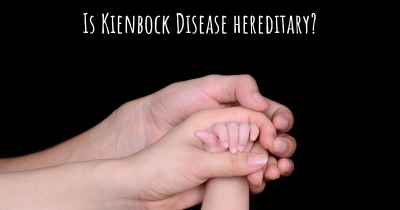What is the history of Kienbock Disease?
When was Kienbock Disease discovered? What is the story of this discovery? Was it coincidence or not?

Kienbock Disease, also known as avascular necrosis of the lunate, is a rare condition that affects the wrist. It was first described by the Austrian radiologist Robert Kienböck in 1910. The disease is characterized by the death of the lunate bone in the wrist due to a disruption in its blood supply.
The history of Kienbock Disease dates back over a century. In the early 20th century, Robert Kienböck observed a group of patients who presented with wrist pain and limited mobility. Through his radiographic studies, he noticed a distinct pattern of lunate bone degeneration. Kienböck's findings were published in 1910, introducing the medical community to this previously unrecognized condition.
Initially, the cause of Kienbock Disease remained unknown. However, over time, researchers began to identify potential risk factors and mechanisms contributing to the development of the condition. It was hypothesized that repetitive trauma, vascular abnormalities, and anatomical variations could all play a role in the disruption of blood supply to the lunate bone.
In the 1930s and 1940s, further investigations into Kienbock Disease led to the development of various classification systems to better understand the progression and severity of the condition. These systems aimed to categorize patients based on radiographic findings, symptoms, and stages of the disease. The Lichtman classification, proposed by Melvin P. Lichtman in 1985, is one of the most widely used systems today.
Throughout the 20th century, treatment options for Kienbock Disease evolved as well. Initially, conservative approaches such as immobilization and pain management were commonly employed. However, as our understanding of the disease improved, surgical interventions became more prevalent.
In the 1950s and 1960s, various surgical techniques were introduced to address the underlying vascular insufficiency and alleviate symptoms. These included procedures like revascularization, joint leveling, and bone grafting. However, the outcomes of these early surgical interventions were often unpredictable, and long-term success rates varied.
Advancements in imaging technology, such as magnetic resonance imaging (MRI), in the late 20th century allowed for better visualization of the disease process and improved diagnosis. This led to a more accurate assessment of the extent of bone damage and helped guide treatment decisions.
In recent years, there has been a growing interest in the field of regenerative medicine for the treatment of Kienbock Disease. Techniques such as stem cell therapy and tissue engineering hold promise in promoting the regeneration of damaged bone and improving overall wrist function. However, further research is needed to establish the efficacy and long-term outcomes of these innovative approaches.
In conclusion, Kienbock Disease has a rich history spanning over a century. From its initial description by Robert Kienböck in 1910 to the advancements in classification, diagnosis, and treatment, our understanding of this condition has significantly evolved. Ongoing research continues to shed light on the underlying mechanisms and potential therapeutic options, offering hope for improved outcomes and quality of life for individuals affected by Kienbock Disease.
Posted Aug 21, 2017 by Michelle 2150








